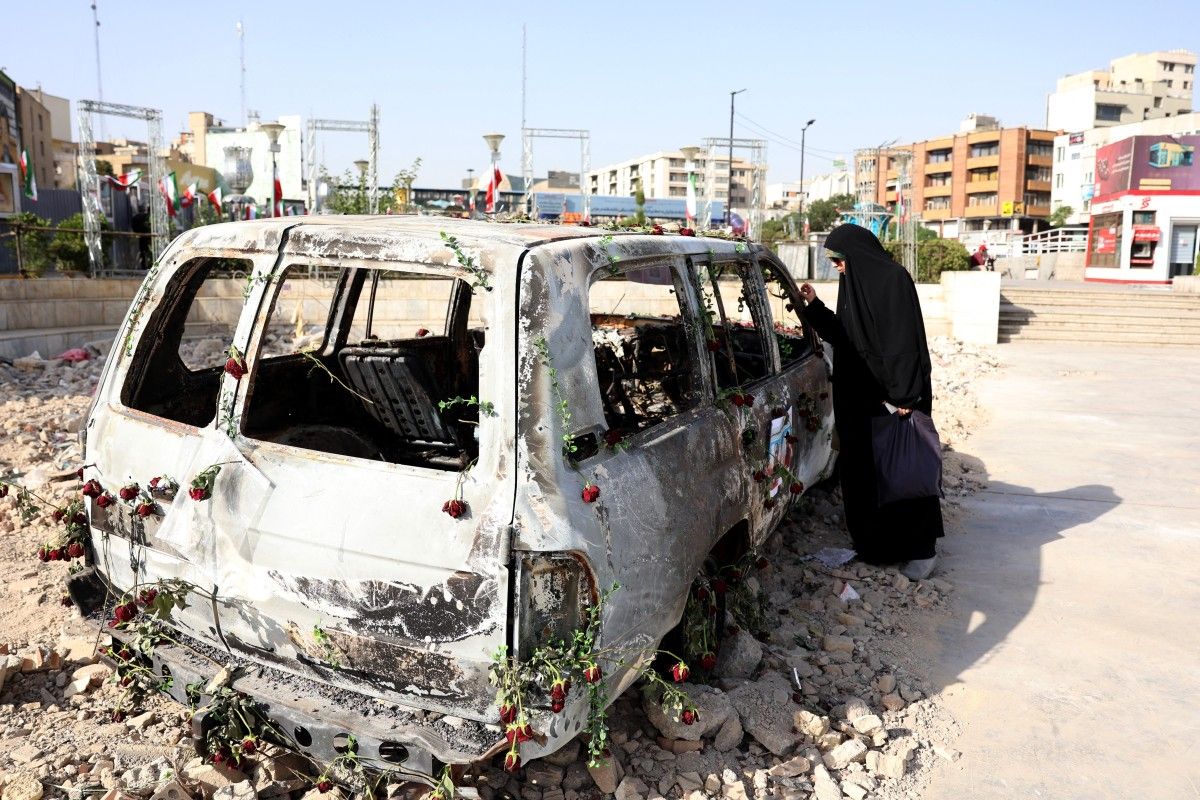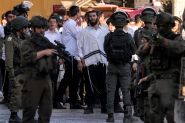- Home
- Middle East
- Israel-Iran, Day 12: Daybreak Confusion, Ceasefire Claims Collide with Renewed Strikes

©ATTA KENARE / AFP
At dawn on Tuesday, uncertainty still seems to master of ceremony. What was announced just hours earlier as the beginning of a ceasefire appeared anything but, as missile sirens blared across Israeli cities and explosions lit up the skies over Tehran.
As U.S. President Donald Trump announced that the ceasefire had taken effect Tuesday morning, there is still doubt over whether the truce has truly taken effect.
Israelis who thought they would awake to a truce have been hit by 6 separate missile alerts. In Beersheba, a missile struck a residential building, killing three people, according to the country’s fire and rescue services. Civilians were seen scrambling repeatedly for shelter as the threat persisted into the early morning.
At least four people were killed in Israel. Rescue service said three people were pronounced dead at the scene of a strike in southern Beersheba while a fourth was added in an update to its figures.
Another two people were "moderately injured" while 20 were treated for minor injuries and anxiety, it said.
Meanwhile, Tehran endured what appeared to be one of the most intense nights of Israeli strikes since the conflict began. According to Tasnim news agency: 9 people were killed in Israeli airstrikes on residential buildings in Gilan Province, northern Iran.
Despite an overnight announcement from U.S. President Donald Trump declaring a ceasefire between Iran and Israel, Iranian state television has indicated that a ceasefire has been “imposed” on Israel, while the Israeli government has yet to officially confirm any agreement. No public statement has been issued by Israeli leaders acknowledging the ceasefire or their participation in such an arrangement.
Trump’s statement, posted shortly after midnight on his Truth Social platform, outlined a ceasefire plan with a specific timeline: Iran was expected to halt its attacks on Tuesday morning, followed by Israel six hours later. After 24 hours, the war would be officially considered over. However, the details were vague, and no joint declaration has followed.
Iranian Foreign Minister Abbas Araghchi denied the existence of a formal agreement, writing on X (formerly Twitter) that “no agreement on any ceasefire” had been reached. Still, he added that Iran would stop its military actions if Israeli strikes ceased by 4:00 a.m. Tehran time. Later, Iranian state television announced that a ceasefire was in effect, characterizing it as something “imposed on the enemy.”
On the ground, however, the reality told a different story. By Tuesday morning, both sides were still launching strikes, and there was no visible indication that hostilities had paused. With no official confirmation from either Tehran or Tel Aviv, the situation remained fluid.
Shortly after the expected deadline, the Israeli army reported that Iran had launched several additional missiles towards Israeli territory. In response, air raid sirens sounded across multiple regions, and the military instructed civilians to move immediately to protected shelters until further notice. Israel’s air defense systems were activated to intercept the incoming projectiles.
The mixed signals have deepened the confusion surrounding the status of the ceasefire. While Tehran appears to be signaling acceptance – albeit on its own terms – Jerusalem’s silence and the continued exchange of fire suggest that peace remains elusive on the ground.
Trump’s Ceasefire Declaration
In a dramatic turn in the ongoing conflict between Israel and Iran, U.S. President Donald Trump has declared, at 1:00 a.m local Israeli and Iranian time, that the two countries have agreed to an open-ended ceasefire, following 12 days of hostilities. The announcement, made via Trump’s platform Truth Social, came just hours after a wave of retaliatory strikes and rising confusion about the ceasefire’s timing and scope.
“This is a war that could have gone on for years and destroyed the entire Middle East, but it didn’t, and never will,” Trump wrote. He praised both nations for the “Stamina, Courage, and Intelligence” to end what he dubbed “THE 12 DAY WAR.” Later in an interview with NBC, Trump described the ceasefire as “unlimited” and expected it to “last forever.”
Behind the Deal: U.S. Talks with Israel and Iran
According to senior White House officials cited by Reuters, Trump personally negotiated the deal with Israeli Prime Minister Benjamin Netanyahu on Monday, while his delegation - reportedly including Vice President JD Vance - held parallel talks with Iranian representatives. The ceasefire terms are said to include a pledge by Israel to refrain from further attacks as long as Iran halts its missile launches.
Iran appears to have agreed to these terms, with Foreign Minister Abbas Araghchi confirming that Iranian military operations ceased at precisely 4:00 a.m. Tehran time. “Our powerful Armed Forces continued to punish Israel until the very last minute,” Araghchi posted on social media, adding that if Israeli strikes stopped at that hour, Tehran had no intention of continuing its response.
Iran Targets U.S. Base in Qatar Ahead of Ceasefire
In a notable escalation prior to the ceasefire, Iran fired ballistic missiles at the U.S. military’s Al Udeid Air Base in Qatar - its largest facility in the Middle East - in retaliation for U.S. involvement in Israeli airstrikes on Iranian soil. The Qatari government confirmed the attack but said its air defenses successfully intercepted the missiles and reported no casualties. Iran reportedly issued an advance warning of the strike to both the U.S. and Qatari governments in an apparent attempt to avoid further escalation.
Trump’s ceasefire announcement followed a series of bold U.S. airstrikes over the weekend targeting Iran’s nuclear infrastructure, including sites at Isfahan, Natanz, and Fordow. The operation, dubbed “Midnight Hammer,” involved B-2 bombers and bunker-busting ordnance. Trump claimed the attacks had “completely and totally obliterated” Iran’s nuclear capabilities, though the full extent of the damage remains unclear.
Regional Fallout: Drone Attack in Iraq
Meanwhile, tensions have spilled into neighboring Iraq. A drone strike targeted a military radar installation at the Taji base north of Baghdad, though no casualties were reported. The base, once home to U.S.-led coalition forces, was handed over to Iraqi security forces in 2020.
Markets React: Oil Prices Fall, Asian Stocks Rise
Global markets responded swiftly to news of the ceasefire. Oil prices dropped further, with Brent crude falling over 4% to $68 a barrel, lower than levels seen before the conflict erupted on June 12. Asian stock markets posted gains, reflecting hopes that the worst of the regional conflict may be over.
Numbers
Israel's sophisticated air defenses have intercepted more than 500 missiles fired at the country by Iran, along with around 1,000 drones, according to the military.
The full extent of damage after 12 days of war is not known due to military censorship rules, but at least 50 impacts have been acknowledged nation-wide and the official death toll stood at 24 before Tuesday's attacks.
Read more




Comments